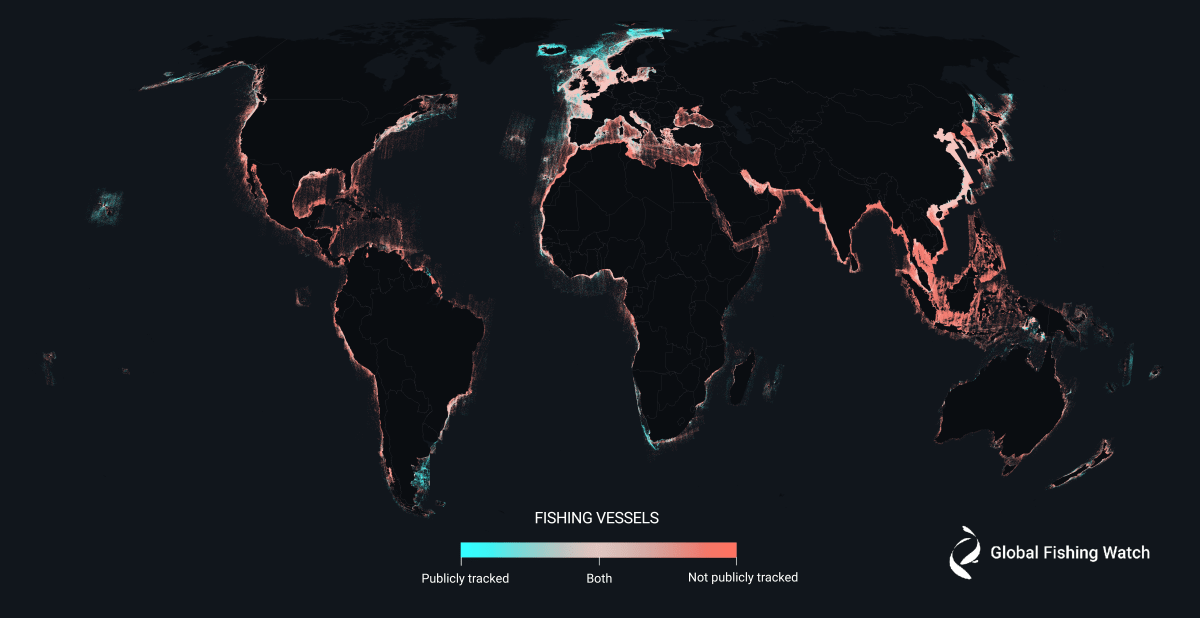Artificial intelligence, like any technology, can have both positive and negative applications. However, researchers at the nonprofit Global Fishing Watch have demonstrated a promising use case by harnessing AI to effectively monitor human activities on the oceans, as detailed in the group’s recent study published in the journal Nature.
Numerous activities have remained undetected by monitoring systems, including the presence of illicit “dark fleets” engaged in unauthorized fishing practices.
In a conversation with Lily Jamali from Marketplace, David Kroodsma, the director of research and innovation at Global Fishing Watch, highlighted the significance of AI in enhancing ocean management. He emphasized that AI can guide efforts towards acquiring essential information for better ocean governance.
The dialogue between Lily Jamali and David Kroodsma has been revised for clarity and coherence:
David Kroodsma: Approximately five years ago, we generated the initial global maps of fishing activities using vessel transponders that transmit GPS locations. While this was a groundbreaking achievement, a major challenge persisted – the lack of data on boats that did not broadcast their positions. In our latest study, we utilized satellite imagery to visually capture the ocean’s expanse and quantify vessel presence. The findings were astonishing, revealing that around three-quarters of large fishing vessels had previously evaded our monitoring systems.
Lily Jamali: How has artificial intelligence contributed to your research endeavors?
Kroodsma: Artificial intelligence plays a pivotal role in conducting large-scale planetary assessments. While a human analyst could painstakingly examine images to identify vessels and correlate them with GPS data, AI enables us to perform these tasks efficiently on a vast scale. Processing approximately 2 million gigabytes of satellite imagery – equivalent to the data storage capacity of 2,000 laptops – has empowered us to offer a comprehensive overview of human activities across the global oceans.
Jamali: What revelations have surprised you during this detailed analysis of oceanic activities?
Kroodsma: The data has unveiled numerous unexpected insights. Firstly, the extent of unmonitored fishing activities, particularly in regions like South and Southeast Asia, was striking. Additionally, the observation of offshore energy developments, with the number of wind turbines surpassing that of oil platforms in recent years, marks a significant milestone. Amid the COVID-19 pandemic, a 12% decline in fishing activities was noted, a trend that has yet to rebound.
Jamali: What factors do you believe have influenced this decline in fishing activities?
Kroodsma: Several factors contribute to this trend, including reduced demand during the pandemic and a broader shift towards sustainable fishing practices. With oceanic resources reaching their limits decades ago, there is a growing realization that decreasing fishing efforts could maintain yields while enhancing profitability. Concurrently, industries such as offshore oil, wind energy, and transportation are experiencing exponential growth, narrowing the historical dominance of fishing in oceanic activities.
Jamali: What are your expectations regarding the impact of AI analysis in this domain?
Kroodsma: It is crucial to recognize that AI analysis complements rather than substitutes governmental data sharing initiatives. Governments possess vital information on fishing activities, energy developments, and other relevant data that may not be publicly accessible. AI serves to fill these informational gaps, offering insights into human activities and guiding effective ocean management strategies. Given the ocean’s critical role in sustaining life and providing resources to billions, improved information is essential for responsible stewardship.
David Kroodsma envisions these AI-driven maps as a tool to navigate the evolving landscape of oceanic activities, describing it as a “new industrial revolution” unfolding on the high seas.
Notably, Global Fishing Watch has identified instances of illegal fishing occurring within marine protected areas. The monitoring revealed frequent vessel presence near the Galápagos Islands and the Great Barrier Reef, highlighting challenges even in well-monitored reserves.
Kroodsma anticipates that the enhanced mapping facilitated by his team can aid in monitoring greenhouse gas emissions and addressing marine degradation resulting from oil pollution.
Furthermore, it is noteworthy that significant cases of illegal fishing and exploitative labor practices were traced back to vessels lacking tracking devices.






